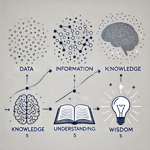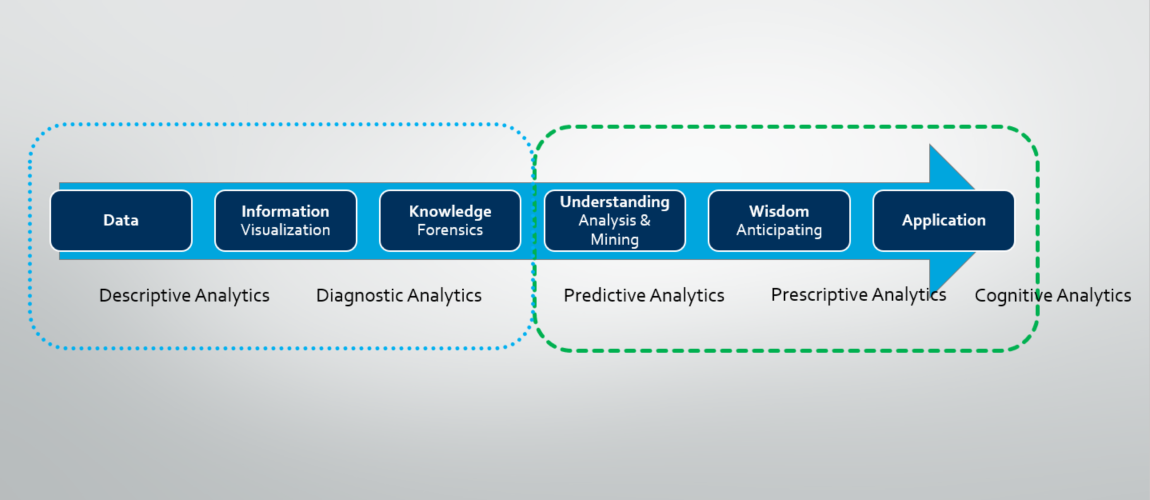 In the ever-evolving world of technology, understanding the progression from raw data to actionable wisdom has never been more vital. As we navigate a data-driven future, the journey from chaos to wisdom offers a structured framework for technologists to harness information, drive innovation, and make informed decisions. This comprehensive guide refines the foundational Data-Information Hierarchy, incorporating insights to equip technologists for 2025 and beyond.
In the ever-evolving world of technology, understanding the progression from raw data to actionable wisdom has never been more vital. As we navigate a data-driven future, the journey from chaos to wisdom offers a structured framework for technologists to harness information, drive innovation, and make informed decisions. This comprehensive guide refines the foundational Data-Information Hierarchy, incorporating insights to equip technologists for 2025 and beyond.
The Data Transformation Hierarchy: D-I-K-W and D-I-K-U-W
The Data-Information Hierarchy is a cornerstone framework often presented as:
Data → Information → Knowledge → Understanding → Wisdom
(Sometimes abbreviated, omitting "Understanding.")
However, this omission undervalues understanding, which is the critical bridge between knowledge and wisdom. In this hierarchy, wisdom is the ultimate goal—but to achieve it, one must traverse all preceding stages, including the often-overlooked step of understanding.
Why Understanding Matters
"The first sign of wisdom is to get wisdom; go, give all you have to get true knowledge." – Proverbs 4:7 (www.basicenglishbible.com/proverbs/4.htm)
This ancient wisdom resonates deeply in our modern, tech-driven world. Wisdom is indeed the goal, but as Cliff Stoll succinctly noted, "Data is not information, Information is not knowledge, Knowledge is not understanding, Understanding is not wisdom." Each step builds upon the last. Without understanding, data and knowledge remain fragmented and fail to produce actionable insights.
Understanding provides the discernment necessary to see beyond surface appearances, avoid pitfalls, and navigate life's complexities. It bridges the gap between knowing and doing, allowing technologists to leverage knowledge in meaningful, strategic ways.
"We collect and organize data to achieve information; we process information to absorb knowledge; we utilize the knowledge to gain understanding; and we apply understanding to achieve wisdom." (Mark Reynolds)
The Five Primary Steps Explained
Russell Ackoff provides a concise breakdown of the five core stages of the hierarchy:
- Data – Symbols
- Information – Processed data that answers "who," "what," "where," and "when"
- Knowledge – Application of data and information that answers "how"
- Understanding – Appreciation of "why"
- Wisdom – Evaluated understanding
Here’s a deeper look at each stage:
1. Data
Data is the raw, unprocessed foundation—elemental quantities or facts. Alone, it lacks cognitive value and cannot support decision-making. However, data serves as the essential building block for every subsequent stage.
2. Information
Information is the logical structuring of data to create context. It answers basic questions such as "who," "what," "when," and "where." While useful, information still lacks the depth required for decision-making, as it does not address the "why."
3. Knowledge
Knowledge emerges when information is synthesized and interpreted to reveal relationships, patterns, or trends. It represents the actionable insights gleaned from information, enabling decision-making and problem-solving at a system level.
4. Understanding
Understanding is the cognitive synthesis of knowledge. It answers the "why," providing the depth needed to make informed judgments. Without understanding, vast amounts of data and information remain static, unable to produce meaningful action.
5. Wisdom
Wisdom is the culmination of the hierarchy—the ability to make sound decisions and judgments based on a deep understanding. Unlike the other stages, wisdom is inherently forward-looking and focused on applying insights to achieve long-term goals.
The Addition of Application
While the hierarchy traditionally ends with wisdom, a crucial sixth step is Application—the practical use of wisdom. Without application, wisdom remains theoretical. Through Application, technologists can create proactive, forward-thinking action plans, turning insights into real-world impact.
As technologists, this involves:
- Data Acquisition: Collecting relevant data
- Data Retention: Securely storing and managing data for accessibility
- Data Transition: Transforming raw data into structured, usable information
- Knowledge Mining: Extracting meaningful patterns and insights
- Cognitive Processing: Synthesizing knowledge into understanding
- Application: Using wisdom to make informed, strategic decisions
Philosophical and Practical Foundations
This hierarchy has philosophical roots, as reflected in the words of Neil Fleming:
- A collection of data is not information.
- A collection of information is not knowledge.
- A collection of knowledge is not wisdom.
Similarly, Proverbs highlights wisdom as the "principal thing," emphasizing its central role in guiding sound judgment and effective action.
This framework is both a philosophical guide and a practical roadmap in technology. By moving through the stages, technologists can transcend the limitations of raw data to address complex problems and envision transformative solutions.

Achieving Wisdom in 2025
In 2025, advancements in AI, machine learning, and quantum computing challenge us to move beyond data accumulation. While these tools provide unprecedented access to data and information, the real competitive advantage lies in achieving wisdom—and then applying it responsibly.
Questions to guide your journey:
- How do we achieve understanding without knowledge?
- How do we achieve knowledge without information?
- How do we achieve wisdom without the foundational steps?
By addressing these questions, technologists can transform chaos into clarity and drive meaningful progress in a data-rich world.
Conclusion
The journey from chaos to wisdom is not just a theoretical construct; it is a practical imperative for technologists navigating the complexities of 2025 and beyond. By embracing the full hierarchy—Data → Information → Knowledge → Understanding → Wisdom—and integrating Application as the final step, we unlock the true potential of data-driven innovation.
Wisdom is the pinnacle of this journey, but its value lies in its application—turning insights into action that shapes a better future. For technologists, this framework serves as both a compass and a roadmap, guiding them to transformative impact in a rapidly changing world.
This blog is a combined report of blogs previously written from 2011 through 2016. They are updated to reflect the emergence of AI.
Blog by Mark Reynolds, updated December 2024.